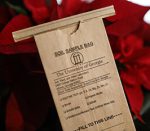Mother Nature is working her magic and you can help get ready for spring with these gardening chores without having to risk frostbite for your vegetables and tender annuals. It’s almost time to prep your garden beds and planting areas for mid-April. But first things first.
 Do a soil test
Do a soil test
This is one test you won’t need to study for, but it will take a little work. For the $8 per test you’ll pay for each tested area, you will reap much better production of tomatoes, squash, beans, peppers and other food crops. And your early spring plantings of flowers and shrubs will thank you for putting them into the best soil for them to thrive.
Without getting too much in the weeds, matching plants with the right pH range will set them up for better absorption of nutrients. In addition to the pH levels, you’ll earn about the presence of what I call “the big three:” nitrogen, phosphorus and potassium. Each plays a major role in your plants’ health and growth.
Here’s how a soil test works:
- Pick areas that you’d like to test, say for vegetable plantings, annuals or shrubs.
- Take a sample from the area by scraping off any mulch, grass or weeds, then digging your shovel about four inches into the ground.
- Take a vertical sample from the side of the hole, getting soil from top to bottom.
- Put the sample into a bucket and repeat in the same area, eventually collecting four to six separate samples.
- Mix them well in the bucket, then remove approximately one cup of soil, placing it in a clean plastic bag. Label each bag with the type of plants you plan to grow. This is very important.
- Repeat in other planting areas, such as lawns, flower beds or vegetable gardens, keeping the samples separate. Different plants require different nutrients and soil acidity to flourish, so it’s important to know how to prepare your soil before you plant.
- Take your bagged samples to your local County Extension Office. The office has official brown-paper sample bags you can transfer your samples into to be sent to the university for testing. There’s a place for your name, address and the type of planting for the area.
- Pay your $8 per sample and you’re set. In two to three weeks, you’ll get back a detailed report that tells you the current condition of your soil and exactly what you need to do to amend it for your plants.
For more information, visit www.extension.uga.edu. And check out all the free publications available online.
A little cleanup and tool care
If you didn’t clean, oil and sharpen your garden tools last fall, March is the perfect time to do so. From washing off last season’s dirt and clay to sharpening everything from shovels and pruners to your lawn-mower blades, a rainy afternoon with a hand-sharpener and some WD40 or linseed oil will save you some frustration later on.
I’ve yet to find a retailer who can sharpen my tools to my satisfaction, so I took matters into my own hands. I purchased a 10-inch Diamond Sharpener from Lawrenceville’s Ironwood tools and I do it myself. The $25 I spent on the red-handled sharpener was well worth the investment.
It’s got a 400-grit side for damaged edges and a 600-grit side for polishing. In 15-20 stokes, my pruners, loppers and other tools are ready for the season.
Wipe the tools with a soft dry cloth, then spray a light coat of oil to help prevent rust.
Georgia-based Ironwood Tools is a family-owned business that offers a wide range of gardening tools. For information, visit www.ironwoodtools.com.






